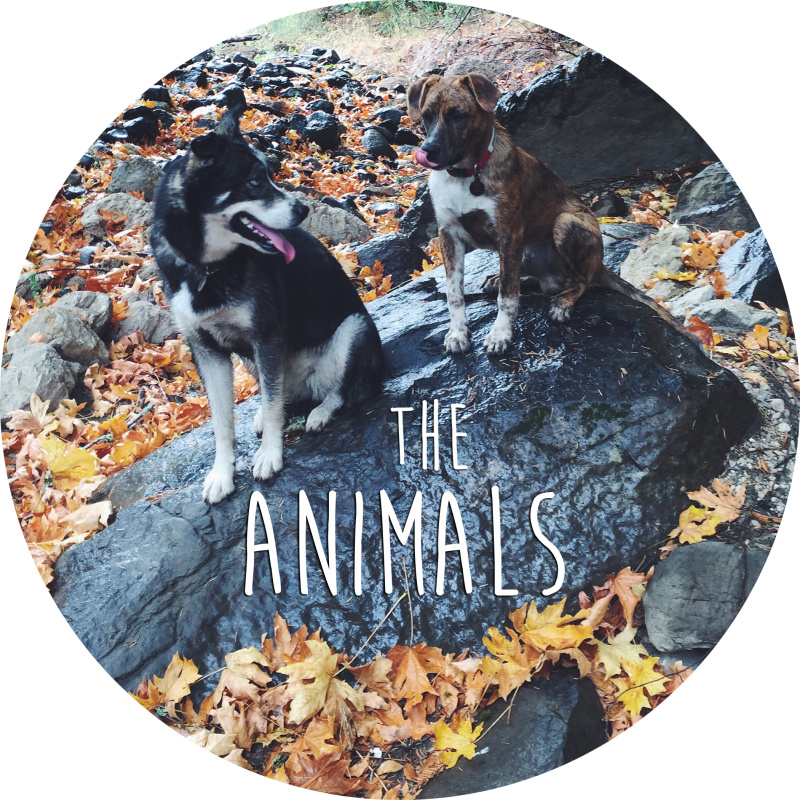Adopting a dog that's "good with kids."
Working at the shelter, one question I hear from time to time is, "Do you have any dogs that are good with kids?" or, "Is this dog good with kids?" |
| Images provided by Family Paws Parent Education. |
Now I totally understand why a parent, or expectant parent, would ask these questions, and I, in fact, commend them for asking questions to begin with - adopting a new pet can be a challenging process, with so many unknowns, so as a rule I always think more questions is better than not enough! But I always have a follow up question, which many people aren't sure how to answer:
"What does that look like to you?"
Unfortunately, many parents picture dogs and children growing up side by side - sleeping in the same bed, sharing toys, the dogs happily accepting exploring toddler fingers that pinch and pull on the their jowls, or fish in their mouths to pull out toys. They may picture their child wrapping her arms around the dog, pulling him in close for a tight squeeze, or even comically sharing sloppy kisses. But this is an unrealistic expectation for most dogs, one that puts them in uncomfortable positions and can quickly become dangerous.
 |
| Furrowed brow, closed mouth, lip lick. All signs up discomfort. |
A shelter dog is largely a dog full of unknowns. There are many dogs that we meet and we can tell quite quickly that they're pretty easy going and may make a good "family dog" but even the "family dog" needs space, agency, and respect. Even a dog that appears "easy going" may quickly figure out that the smallest humans in the home are the most apt to inadvertently pinch, pull tails, or stumble over them, and they may become protective of their space.
So to me, whether or not a dog is going to succeed in a home with children is largely up to the parents or responsible adults in the home. Sure, there are plenty of dogs that simply need a quieter environment, and aren't going to do well with the happy chaos of a home with children. But for those that are relatively "go with the flow" there are still a lot of steps you can take to set them up to succeed, here are three big ones:
1. Management. Dogs and children, especially a brand new dog that you know little about, should be managed when active supervision is not possible. This means using crates, xpens, baby gates, or designated rooms to create space when an adult isn't guiding the interaction.
2. Supervision. Active supervision means the adult is present, preferably situated physically between the child and the dog, and is not multitasking - not on a phone, not watching TV, etc. The responsible adult should be aware of the child's location and the dog's body language at all times. Signals can change fast, so simply being in the same room is not enough.
3. Consent. Dogs should be allowed to choose when to engage
and when to disengage. In my home, this means that visitors are not permitted to pet my dogs unless my dogs choose to approach. No petting a dog that is snoozing or relaxing in a bed or comfortable resting place, no petting a dog that is engaged with someone or something else (big recipe for surprise), no following a dog that is moving away, etc. This also means practicing consent checks - "pet, pet, pause." Pet a dog once or twice, then remove your hands and see if the dog moves in for additional petting, or chooses to move away. This is important information about the dog's interest in continuing the interaction. Note that this is very difficult, if not impossible for some children, depending on their age, maturity, and interest in the dogs. It is our job as the responsible adult to intervene if they are not respecting these rules.
Reading all this and thinking, "Dang that sounds like a lot of work! I'm better off just getting a puppy instead!" Stayed tuned for my next post about why adding a puppy to a household with children requires just as much care!









